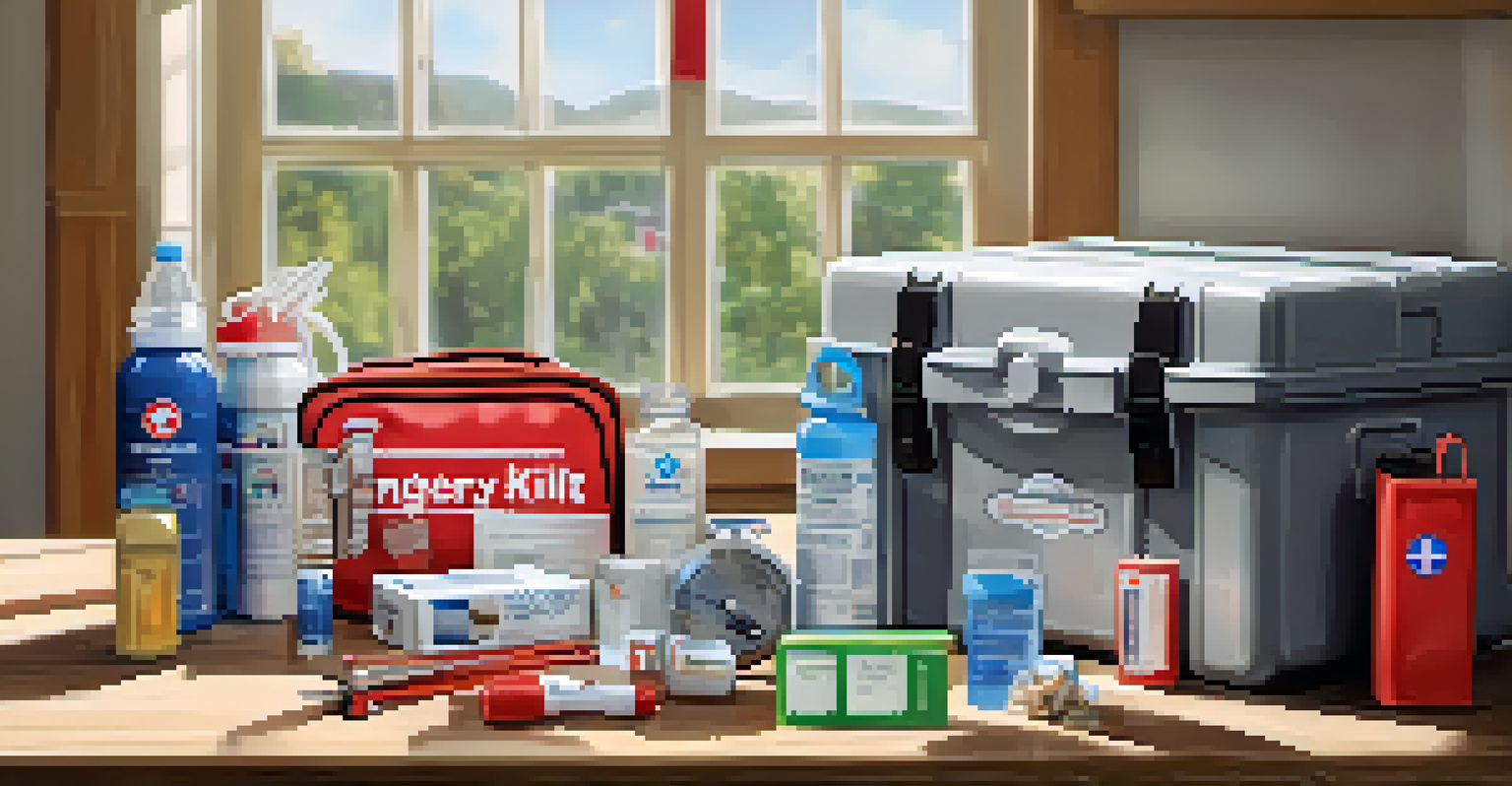How to Develop a Family Emergency Plan in San Jose

Understand the Importance of an Emergency Plan
Having a family emergency plan is essential, especially in a city like San Jose, which can experience natural disasters such as earthquakes or wildfires. An emergency plan helps ensure that every family member knows what to do during a crisis, reducing panic and confusion. By preparing in advance, you can enhance your family's safety and increase your chances of staying together during an emergency.
By failing to prepare, you are preparing to fail.
Think of your emergency plan as a roadmap. Just as you wouldn’t embark on a road trip without directions, you shouldn’t face an emergency without a plan. This roadmap should guide you and your loved ones to safety, outlining clear steps to take when disaster strikes.
In essence, a well-crafted emergency plan is not just a precaution; it’s a vital tool for peace of mind. Knowing you have a plan in place can ease anxiety and help your family feel more secure.
Assess Your Family's Needs and Risks
Every family is unique, and so are their needs and risks. Start by discussing specific vulnerabilities that your family may face, such as medical conditions, disabilities, or the age of family members. This assessment will help you tailor your emergency plan to ensure everyone's needs are met.

For instance, if you have young children, consider how they will react to emergencies. Are they familiar with emergency protocols? Or if you have elderly family members, they may require additional assistance during a crisis. Understanding these nuances is crucial for creating a practical plan.
Create a Family Emergency Plan
Having a well-structured emergency plan helps ensure every family member knows what to do during a crisis, reducing anxiety and confusion.
Additionally, researching the potential hazards specific to San Jose can inform your preparation. Familiarize yourself with local emergency services, evacuation routes, and community resources to ensure your family is well-equipped to handle any situation.
Establish Communication Protocols
Effective communication is vital during an emergency, so establishing clear protocols is essential. Make sure every family member knows how to reach one another if separated. Designate a family meeting place, both near home and further away, in case you need to evacuate.
It’s not the plan that is important, it’s the planning.
Consider using a group messaging app or social media platform to keep everyone updated during an emergency. This way, you can quickly share critical information, such as changes in plans or the status of safety.
Lastly, ensure that everyone has a list of important contacts, including neighbors, friends, and family members who can assist if needed. This connectedness strengthens your family’s resilience and ability to navigate crises together.
Create an Emergency Kit for Your Family
An emergency kit is a crucial component of your family emergency plan. This kit should contain essential supplies that can sustain your family for at least three days. Items to include are non-perishable food, water, first aid supplies, flashlights, and battery-powered radios.
When building your kit, think about the specific needs of your family members. For example, if you have pets, don’t forget to include food and water for them as well. Personal items like medications, glasses, and important documents should also have a designated spot in the kit.
Assess Individual Family Needs
Understanding your family's unique needs and risks allows you to tailor your emergency plan effectively for everyone involved.
Regularly check and update your emergency kit to ensure all items are still usable, especially food and medications. This small maintenance task can make a significant difference in a crisis, ensuring that you have everything needed when it matters most.
Develop an Evacuation Plan
An evacuation plan outlines how your family will leave your home in the event of an emergency. Identify multiple routes to your designated meeting place, as some roads may be blocked or unsafe. This foresight ensures that you can adapt to changing circumstances.
Practice your evacuation plan through regular drills. Familiarize everyone with the routes and what to grab in an emergency, such as the emergency kit and important documents. The more prepared everyone is, the smoother the evacuation will be.
Consider transportation options as well. Ensure that vehicles are in good condition and have enough fuel for an evacuation. Having a plan for pets is also crucial, so decide how you’ll transport them if necessary.
Stay Informed About Local Emergencies
Staying informed about local emergencies is vital for your family's safety. Sign up for local alerts and warnings through the San Jose Office of Emergency Services. These notifications can provide critical information during a crisis, such as evacuation orders or shelter locations.
Additionally, follow local news outlets and social media channels for real-time updates. Being aware of the situation around you allows for timely responses and better decision-making during emergencies.
Engage with Local Community Resources
Connecting with local organizations enhances emergency preparedness and fosters valuable support during a crisis.
Lastly, consider investing in a NOAA weather radio. These devices provide continuous broadcasts of weather information and emergency updates, ensuring that you won’t miss essential alerts even when other communication methods fail.
Review and Practice Your Plan Regularly
Creating an emergency plan is just the first step; regularly reviewing and practicing it is equally important. Schedule family meetings to discuss the plan, update any necessary information, and address any concerns. This keeps everyone informed and engaged in their safety.
Practice drills can solidify your family’s preparedness. Whether it’s a fire drill or a simulated evacuation, these exercises can help identify any gaps in your plan. The more familiar everyone is with their roles and responsibilities, the more effective your response will be.

Remember, emergencies can happen anytime, and being prepared can make all the difference. Consistent practice can turn a chaotic situation into one where your family knows exactly what to do and where to go.
Engage with Your Community for Preparedness
Community engagement is a key element of effective emergency planning. Connect with local organizations and neighborhood groups that focus on emergency preparedness. These connections can provide valuable resources, information, and support during a crisis.
Participate in local workshops or training sessions offered by emergency services. Not only does this enhance your skills, but it also fosters relationships with your neighbors, which can be invaluable during an emergency. After all, a strong community can help everyone weather a storm.
Lastly, consider volunteering for community emergency response teams (CERT). This hands-on experience can deepen your understanding of emergency management and equip you with practical skills to assist others in need.